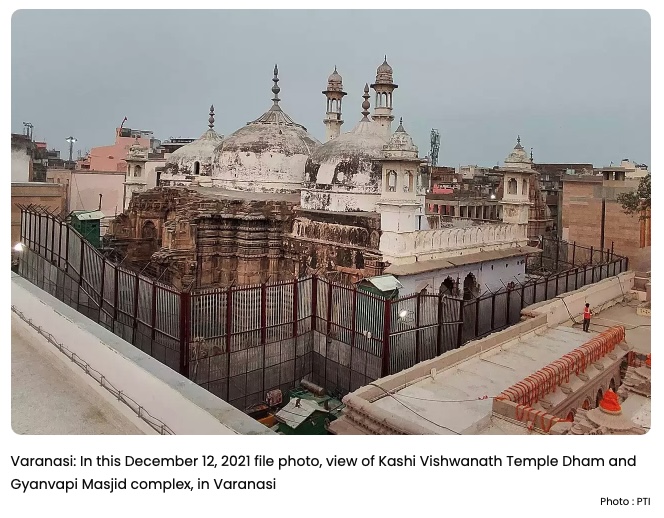VARANASI, INDIA, May 17, 2020 (Times Now News): Kashi Vishwanath temple is one of the 12 main jyotirlingas whose first archaeological evidence dates back to 9th-10th BC. It was renovated to grandeur during the Gupta period (4th to 6th century ce), a fact mentioned by Chinese historian Hsuan Tsang. It was demolished repeatedly by invaders like Mohd Ghori, Mahmud Sharqi and Aurangzeb during different points in history. All those who have visited the Kashi Vishwanath temple would be aware of the presence of the beautiful and benign statue of Nandi, Lord Shiva’s bull. The statue is nearly 7 feet in height and faces the wall of the Gyanvapi mosque. For those familiar with Hindu traditional architecture, Nandi is supposed to be facing the main Deity Lord Shiva, either in the form of a statue or as the Linga, puzzling researchers for centuries as to the location of the actual sanctum sanctorum.
Anecdotal history has it that when Mughal emperor Aurangzeb attacked Varanasi and ordered the demolition of the Kashi Vishwanath temple in the September of 1669, the priests of the temple had removed the Shivalinga and hid it in a well that exists between the Kashi Vishwanath temple and the Gyanvapi mosque. And thus, when the assaulters came, they could not find the central Deity of the temple and it escaped harm. It is recorded history that Muslim invaders were iconoclasts who would disfigure statues of Hindu worship as damaged figures are not prayed to. So, while the assailants smashed the structure of the temple, its structure, and decorations, when they moved towards the Nandi to destroy it, a swarm of bees attacked them. The troops fled leaving behind the untouched statue of Shiva’s bull. Such is the anecdote.
More of Kashi Vishwanath’s history at source
https://www.timesnownews.com/columns/kashi-vishwanath-temple-was-built-and-demolished-3-times-the-known-and-unknown-history-article-91616334
HPI note: In the photo above of the Gyanvapi mosque, the original first story of the Shiva temple can be plainly seen, with the domes later placed upon it after the upper part of the temple was destroyed.

